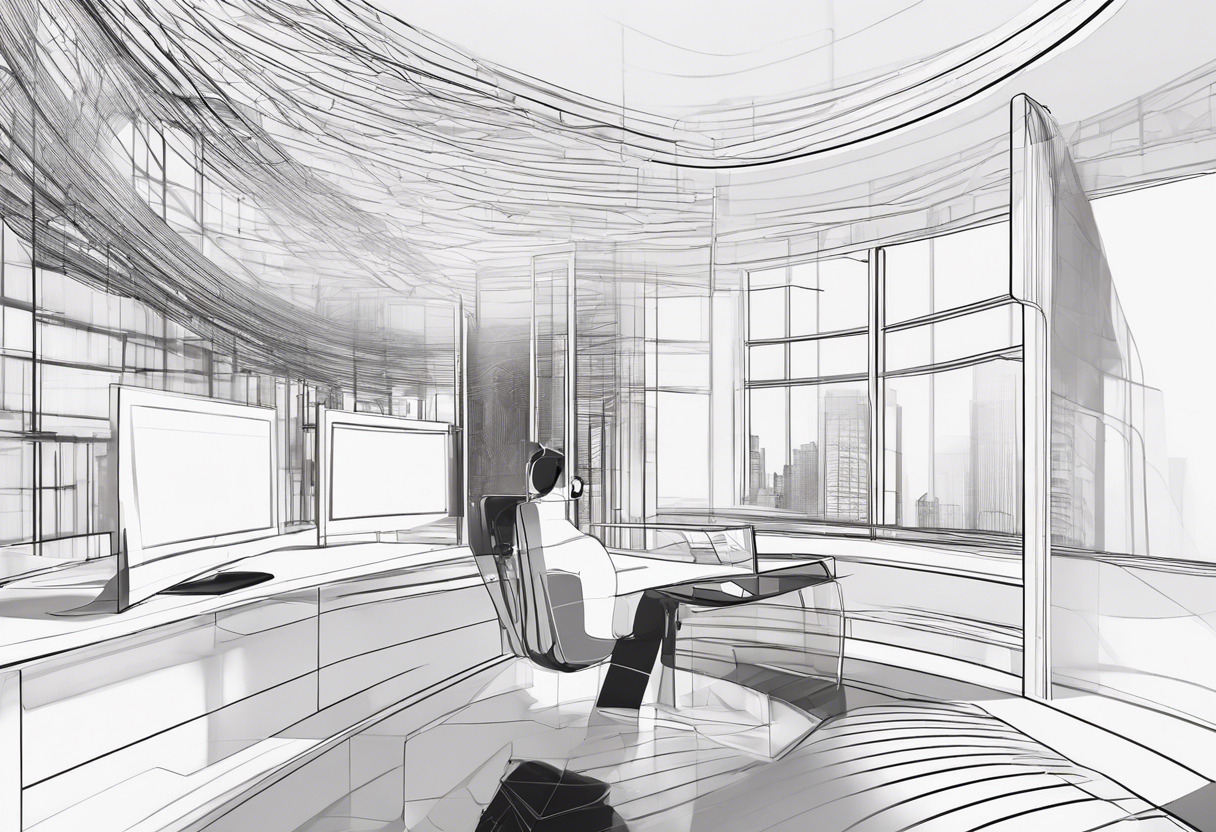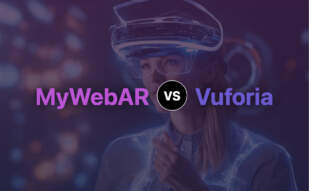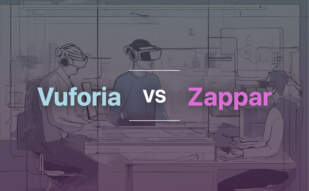AR Foundation is a comprehensive choice for developers adept at Unity, C# programming and require diverse AR features for highly customized applications. Vuforia is the better solution for beginners or those needing a straightforward AR tool with advanced image recognition and cloud add-on capabilities.

Key Differences Between AR Foundation and Vuforia
- Platform: AR Foundation is a package under Unity; Vuforia is an independent SDK.
- Capabilities: AR Foundation offers more AR functions (e.g. plane detection, meshing, anchors); Vuforia stresses on image and object recognition.
- Compatibility: Both operate on Android, iOS – Vuforia extends to UWP and AR glasses, AR Foundation supports only ARKit/ARCore devices.
- Licensing: Vuforia offers more flexible plans with specific feature-based pricing; AR Foundation included with Unity license.
| Comparison | Unity’s AR Foundation | Vuforia |
|---|---|---|
| Supplementary AR/VR Tools | Google’s ARCore Extensions, ARCore XR Plugin for Android, ARKit XR Plugin for iOS | Localization, occlusion detection, runtime image target selection |
| Compatibility | Android (ARCore supported device), iOS (Xcode 11.0 or later), Unity 2019.4.3f1 or later | iOS, Android, UWP, Unity (version 2022.3.5f1+) |
| Features | Camera configuration filters, Cloud Anchors, Recording, Playback | 2D/3D target types, Image Targets, 3D Model Targets, VuMarks |
| Environment Understanding | AR session for motion tracking, environmental understanding, lighting estimation | 6 DOF device localization, localized occlusion detection |
| API Language | Unity API | C++, Java, Objective-C++, .NET languages |
| Development Complexity | Aimed at game developers with beginner-level knowledge of Unity development, C# programming, 3D graphics, AR usage | Used by 800k+ developers, across various applications with large-scale adoption |
| Performance | AR Foundation provides a solid base for AR development, benefits from Unity’s powerful game features | Vuforia Engine optimized for performance and latency, real-time detection and data overlay capabilities |
| Support Options | AR Foundation samples, Debug Menu, Configuration Chooser | Extensive support through multiple license options, community, and company interaction |
| AR Project Examples | virtual photo gallery, educational image tracking app, facial accessories app | 3D product demonstrations, interactive campaigns, AR Digital Twin projects |
| Plan Options | Comes with the Unity Package Manager, no additional plans | Develop, Basic, Basic with Cloud License, Pro, with option for additional Cloud add-ons |
What Is Unity’s AR Foundation and Who’s It For?
Unity’s AR Foundation is a potent tool for anyone willing to plunge into the enthralling realm of AR experiences. It’s a robust framework that supports Android and iOS and shapes the DNA of interactive AR applications and games. This platform is primarily intended for game developers who have beginner-level knowledge of Unity development, C#, 3D graphics, and mobile application development.

Pros of Unity’s AR Foundation
- Supports Android and iOS, offering robust cross-platform compatibility.
- Foundation includes game objects like AR Session, AR Session Origin.
- Allows development of different AR projects – virtual photo gallery, image tracking app, facial accessories app.
- Best-in-class vertical planes or environment probes support in Vuforia scene.
Cons of Unity’s AR Foundation
- Requires Unity 2019.4.3f1 or later.
- ARCore supported device needed for Android; for iOS, Xcode 11.0 or later is required.
- It might be not very easy for novice developers to grasp.
What Is Vuforia and Who’s It For?
Vuforia, an AR software development kit (SDK), was originally crafted by Qualcomm and later acquired by PTC Inc. in 2015. A powerhouse of computer vision technology, Vuforia is ideal for tech enthusiasts keen to build AR applications that excel in object recognition. This technology caters to developers proficient in C++, Java, Objective-C++, and .NET languages for the Unity game engine.

Pros of Vuforia
- Supports an array of target types – 2D/3D, Image Targets, Model Targets, VuMarks.
- Compatible with iOS, Android, UWP – enhancing the spectrum of deployment.
- Unlimited app development and publishing with the Basic Plan.
- Caters to AR glasses – HoloLens 1, Microsoft HoloLens 2, Magic Leap.
Cons of Vuforia
- Cloud add-ons are not available in China.
- Premium Plan cancellation requires contact with the company.
- Minimum support for Unity is version 2022.3.5f1+.
- Future versions of Vuforia will remove the feature of Virtual Buttons.
Code Examples for AR Foundation & Vuforia
AR Foundation: Creating a Plane Detection
This code snippet facilitates the detection of horizontal planes in Unity AR Foundation. It is mandatory to have Unity3D and AR Foundation set up to run this piece of code successfully.
void Start() {
m_arp = GetComponent<ARPlaneManager>();
}
void Update() {
foreach (var plane in m_arp.trackables) {
if (plane.alignment == PlaneAlignment.HorizontalUp)
Debug.Log(plane.ToString());
}
}
private ARPlaneManager m_arp;
Vuforia: Implementing Image Tracking
This is an examplar piece of code that demonstrates how to implement image tracking in Vuforia. Prior to running this instance, ensure that Unity3D and Vuforia SDK are installed and appropriately configured.
void Start() {
m_imageTracker = TrackerManager.Instance.GetTracker<ObjectTracker>();
}
void Update() {
var imageTargetBehaviour = GetComponent<ImageTargetBehaviour>();
if (imageTargetBehaviour.mImageTarget != null) {
Debug.Log(imageTargetBehaviour.mImageTarget.ToString());
}
}
private ObjectTracker m_imageTracker;
Final Verdict: AR Foundation vs Vuforia
In the arena of AR technologies, choosing between AR Foundation and Vuforia can be a complex decision. Here’s a breakdown for different audience segments:
Game Developers
For those with beginner-level knowledge of Unity development, AR Foundation’s simplicity, universality, and extensive feature set make it a clear choice. Its integration with Unity’s API provides immense flexibility. Boldly put, AR Foundation outshines Vuforia especially with its AR session crucial for smooth gaming development.

AR/VR Creators
Vuforia, with its robust object recognition and 6 DOF device localization, proves to be a powerful tool. While AR Foundation has its merits, the broad capabilities of Vuforia including localized occlusion detection and runtime image target selection tip the scale in its favour. Decisively, for AR/VR creators, Vuforia stands superior.

App Developers
Application developers should be swayed towards AR Foundation’s comprehensive feature set and cross-platform compatibility. Leveraging AR Foundation’s compatibility with the powerful Unity 2019.4.3f1 or later, this is the undeniable better choice for building multi-platform AR applications.

The choice between AR Foundation and Vuforia largely depends on the user’s needs. For game developers leaning towards simplicity and universality, AR Foundation shines. Meanwhile, AR/VR creators with a focus on object recognition will find Vuforia superior. App Developers aiming for multi-platform deployment should opt for AR Foundation.
Hannah Stewart
Content writer @ Aircada, tech enthusiast, metaverse explorer, and coffee addict. Weaving stories in digital realms.





